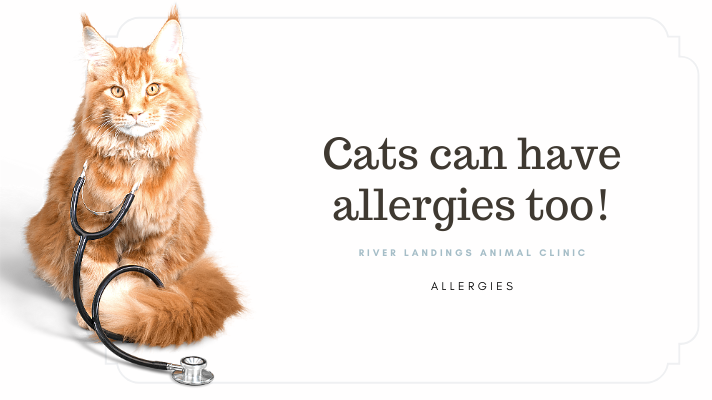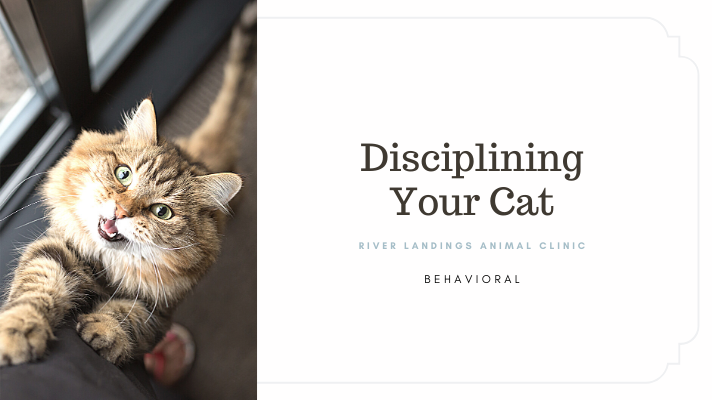Although most feline infectious diseases only affect cats, some of these diseases can be transmitted from cats to people. Diseases that can be transmitted from animals to people are called zoonotic diseases. While not comprehensive, this article highlights the most common zoonotic diseases that may be carried by cats and simple precautions you can take to reduce your risk of contracting these diseases. For more information about specific risks, diagnosis, and treatment of zoonotic diseases, contact your physician/health professional.
What's the risk?
The likelihood of an average person contracting a zoonotic disease from a cat is low, but individuals with immature or weakened immune systems are more susceptible to these diseases. This includes infants, individuals with acquired immunodeficiency syndrome (AIDS), the elderly, and people undergoing cancer chemotherapy or receiving other drugs that may suppress their immune systems.
Common Feline Zoonotic Diseases
Bacterial Infections
Cat scratch disease (CSD) is caused by a bacterium called Bartonella henselae, which may be carried in the saliva of infected cats and in the bodies of cat fleas. As the name implies, this bacterial infection is usually transmitted from cat to human via scratches, although it can also be transmitted via bite wounds and when a cat licks the open wounds of a person. Among cats, this bacterium is most commonly transmitted by the bites of infected cat fleas, and it may also be found in the feces of these fleas, which can serve as sources of infection if exposed to an open wound in either a cat or a human.
People with CSD usually develop swelling and possibly a blister at the site of the bite or scratch. Lymph nodes in the region of the wound may swell and become painful, and affected individuals may experience fever, headache, sore muscles and joints, fatigue, and poor appetite. Healthy adults generally recover with no lasting effects, but it may take several months for the disease to go away completely. People with compromised immune systems may suffer more severe consequences, including infections of the eyes, brain, and heart. Severe cases of CSD may require antibiotic therapy to resolve.
Approximately 40 percent of cats are infected with Bartonella henselae, but most show no signs of disease. Antibiotics do not reliably cure infection in these cats and are not currently recommended. For humans, avoiding scratches and bites (for example, by not allowing children to play roughly with cats), washing hands after playing with cats, controlling fleas, and keeping cats indoors all reduce the risk of CSD. Because most cases of CSD result from contact with kittens under one year of age, immunocompromised people should avoid such contact.
Pasteurella multocida is a bacterium found in the mouths of between 70 and 90 percent of cats, and it has been found in between 50 and 80 percent of cat bites in humans that become serious enough to seek medical attention. Cat bites infected with this organism may develop pain, swelling, and redness at the wound site within 24 to 48 hours. Pasteurella-infected cat bite wounds are successfully treated with antibiotic therapy in the vast majority of cases, but more serious complications, such as the spread of bacteria through the blood stream and infection of heart valves, may occur in rare cases.
Salmonella poisoning, also called salmonellosis, is caused by a group of bacteria called Salmonella, and can lead to diarrhea, fever, and stomach pain beginning one to three days after infection. People usually contract salmonellosis by eating contaminated food, such as undercooked chicken or eggs, but it is possible to contract the disease from infected cats, which can carry Salmonella bacteria and pass them in their stool. Although salmonellosis usually resolves on its own, some individuals require medical attention to address severe diarrhea or the effects of the infection on organs other than the digestive tract.
Salmonella is more commonly found in cats that feed on raw meat or wild birds and animals, so owners can reduce the risk of salmonellosis in themselves and their cats by keeping cats indoors and feeding them cooked or commercially processed food. Wearing gloves when cleaning litterboxes or gardening (in case outdoor cats have defecated in the soil) and washing hands thoroughly after these activities is also recommended.
Parasitic Infections
Fleas are the most common external parasite of cats, and their bites can cause itching and inflammation in humans and cats alike. Fleas may also serve as vectors for CSD and other zoonotic diseases. Flea-infested cats may become infected with tapeworms from fleas ingested while grooming. While not common, people can also become infected with tapeworms by inadvertently ingesting fleas.
Scabies, or infection by the mange mite Sarcoptes scabiei, is another zoonotic external parasite of the skin of cats. While not as common as flea infestations, these mites can be passed from infected cats to people, where they burrow into the skin and cause itchy, raised lesions. Treatment in people usually involves the use of topical ointments to decrease itching, diligent treatment of infective pets, and careful cleaning of clothes and bedding.
Certain feline intestinal parasites, including roundworms (Toxocara) and hookworms (Ancylostoma), can also cause disease in people. Children are particularly at risk due to their higher likelihood of contact with soil that has been contaminated by cat feces. Although most people infected with feline intestinal parasites do not show signs of illness, some people may get sick.
Visceral larva migrans, a potentially serious disease that can affect various organs, results from consumption of Toxocara eggs (for instance, when soiled fingers are placed in the mouth). Toxocara larvae may then migrate to abdominal organs, including the liver, or to the central nervous system. Symptoms of visceral larva migrans may include fever, fatigue, coughing, wheezing, and abdominal pain. Ocular larva migrans is the term used for a condition in which Toxocara larvae migrate to the eye, causing visual disturbances, abnormal eye movements, or eye pain and discomfort.
Cutaneous larva migrans, an itchy skin disease, is caused by contact with soil contaminated with Ancylostoma larvae. These larvae may penetrate and migrate under the skin, with resultant inflammation, itching and pain, and raised, red linear lesions in the skin that follow the larva’s migration. Proper hygiene, including washing hands before meals, cleaning soil from vegetables, and reducing exposure to cat feces can prevent infection. Anti-parasite medications for kittens and annual fecal exams for adult cats can reduce environmental contamination and the risk of human infection.
Fungal Infections
Ringworm (or dermatophytosis) is not caused by a worm at all. Rather, it is a skin infection caused by a group of fungi. Infected cats most often come from environments housing large numbers of animals. In cats, ringworm usually appears as a dry, gray, scaly patch on the skin. In humans, ringworm often appears as a round, red, itchy lesion with a ring of scale around the edge. Lesions may be found in a variety of places, including the scalp, the feet (where’s its referred to as “athlete’s foot”), the groin, or the beard. Ringworm is transmitted by contact with an infected animal’s skin or fur, either directly or from a contaminated environment. Infected cats continuously drop fungal spores from their skin and fur. These spores, which remain capable of causing infection for many months, are difficult to eradicate from a household. Children are particularly at risk of infection. Treatment involves the use of either topical antifungal ointments or oral antifungal medication, depending upon the severity and location of lesions. To reduce environmental contamination, confine infected cats to one room until they are free of infection, then thoroughly clean and disinfect the household.
Protozoal Infections
Protozoans are single-celled organisms. The three most common protozoal diseases in cats and humans are cryptosporidiosis, giardiasis, and toxoplasmosis.
Cryptosporidiosis can cause diarrhea, vomiting, fever, abdominal cramps, and dehydration in both cats and people. Either direct or indirect contact with the feces of cats infected with Cryptosporidium organisms can lead to transmission of this disease. As with most other zoonotic diseases, immunocompromised individuals are at the greatest risk of infection. To prevent the spread of infection, schedule annual fecal examinations for your cats, and medicate infected cats as directed by your veterinarian. Other preventive measures include wearing gloves while handling feces-contaminated material and washing hands afterwards.
Giardiasis is caused by infection with the microscopic parasite Giardia. Many animal species (including the cat), are susceptible to infection with Giardia, which is passed in the feces and usually spread to other animals and humans via contaminated water sources, surfaces, or in uncooked food items. The symptoms of Giardia infection include diarrhea, flatulence, abdominal cramps, nausea, and dehydration. A number of prescription drugs are available to treat this condition, and most people that are infected make an uneventful recovery. It is important to realize that the majority of cases of giardiasis in people do not occur as a result of infection by cats, but rather by ingesting water or food contaminated by farm animals or wildlife.
Toxoplasmosis is caused by the parasitic protozoan Toxoplasma gondii. People with weakened immune systems and infants whose mothers are infected during pregnancy can develop severe illness from this parasite. Most people infected with Toxoplasma, however, show no overt signs of disease.
Cats can acquire Toxoplasma by eating infected rodents, birds, or anything contaminated with feces from another infected animal. An infected cat can shed the parasite in its feces for up to two weeks. Once shed in the feces, the parasite must mature for one to five days before it becomes capable of causing infection. However, it can persist in the environment for many months and continue to contaminate soil, water, gardens, sandboxes, or any place where an infected cat has defecated. Although pregnant women or immunosuppressed individuals are often advised to remove cats from the household to reduce the risk of toxoplasmosis, direct contact with cats is very unlikely to spread infection with this organism.
Cats can transmit Toxoplasma to people through their feces, but humans most commonly become infected by eating undercooked or raw meat, or by inadvertently consuming contaminated soil on unwashed or undercooked vegetables. The symptoms of toxoplasmosis include flu-like muscle aches and fever, and headache. In rare cases, more advanced symptoms such as confusion, seizures, vomiting, or diarrhea may be observed.
Basic hygiene can prevent the spread of Toxoplasma from cats to humans. Wear gloves when handling potentially contaminated material (for example, when gardening or scooping the litterbox), and be sure to wash your hands afterwards. Cover children’s sandboxes when not in use to prevent wandering cats from defecating in them.
Pregnant women or immunosuppressed individuals are safest when other household members clean the litter box.
Viral Infections
Rabies is a viral disease that is spread through the bite of an infected animal. Although most viruses infect only their natural host species, rabies is an important exception. Cats are highly susceptible to rabies, which attacks the central nervous system, causing a variety of signs. Rabies is almost always fatal. In people, rabies infections usually occur when an infected animal bites a person. In order to protect human health, rabies vaccination of cats is required by law in many areas. Even if your cat is kept indoors, it is important to keep rabies vaccines current because cats occasionally escape outdoors, and because rabid animals such as bats and raccoons occasionally enter houses. To further reduce your risk of rabies, avoid contact with wildlife and stray animals and see a doctor immediately if you have been bitten by an animal.





